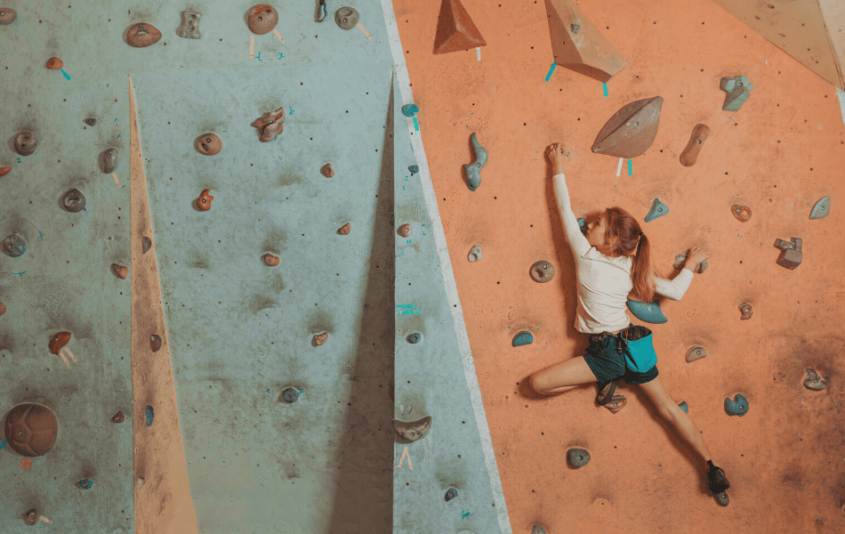Yoga is the perfect adjunct practice for rock climbing for many reasons.
It helps to counterbalance the physical effects of climbing on the body.
Serious climbers tend to have neck tension, tight hamstrings, and overdeveloped back and shoulder muscles.
With time and dedication, yoga can help alleviate these effects slowly and safely if done right.
Here are five ways yoga can help you up your climbing game to go even more vertical:
1. Increase Flexibility
It’s no secret that a regular yoga practice can help you become more flexible and can increase your range of motion significantly.
But the flexibility you gain from this ancient practice goes far beyond the physical kind.
When practiced in its entirety and true essence, yoga helps your mind and emotions stay flexible too.
This is extremely important when climbing because you’ll be a lot more responsive and less reactive.
This can help you overcome challenging sequences and footwork.
2. Increase Balance
Poses like tree pose (Vrksasana), half-moon (Ardha Chandrasana), warrior III (Virabhadrasana III), and eagle pose (Garudasana) can all serve as training to help you play with balance.
These poses also help to balance your focus so you employ one-pointed concentration in what you’re doing, in your body, and in the movements.
This sustained focus is so important in yoga practice that it has its own dedicated pillar or limb of yoga called Dharana.
3. Increase Strength
Whether it’s arm, leg, or core strength you’re after yoga can help.
Just do enough Chaturanga Dandasanas (four-limbed staff pose), plank poses, and boat poses (Navasana) and you’ll soon enough feel the burn in your belly.
A few rounds of Sun Salutations (Surya Namaskar) and warriors (Virabhadrasana) will help activate your arms so you can keep your body close to the climbing wall, and help to lengthen your legs for that much-needed ascension up the wall.
Because active (yang) yoga poses help to generate heat in the body yoga also helps you train your body and mind to endure pain, challenge, and discomfort beyond previous setpoints.
This yogic practice is called Tapas and it helps you burn away impurities both on and off the mat, on and off the wall so you can keep evolving and transforming all aspects of the Self.
4. Deepen body awareness
Dedicating yourself to a regular and consistent yoga practice also helps to deepen awareness of your own body.
Yoga practice can lead to increased ‘proprioception’ or the awareness and perception of your own body movements and position in space.
Every pose, every transition, every sequence begs your full attention and awareness.
Awareness of your foot position, your hips, your arms, and your alignment.
This is extremely helpful for climbers to determine if you can heel hook onto a nearby foothold, or is bridging needed to regain your balance on the rock?
5. Cultivate Mindfulness
Yoga practice, especially yin yoga*, helps you to be comfortable in stillness, invoke the observer within, sharpen your focus, and notice what is.
Mindfulness is generally defined as paying attention to what is, as it is, without having to judge or change it.
In time, with enough practice, this can help you to approach difficulties and challenges from a more elevated perspective both on and off the mat… On and off the climbing wall.
*A note on Yin yoga:
Yin yoga is a slow-moving style of yoga that is often referred to as the counter to the typical active and repetitive movements we see in yang style yoga such as vinyasa and ashtanga.
In Yin Yoga, you hold the poses in stillness for typically anywhere from 1-5 minutes depending on the intensity of the pose.
Yin yoga helps to relax the muscle while working the connective tissue, tendons, and ligaments.
As a climber, it’s best to practice yang yoga as a pre-climb workout and yin yoga as a post-climb recovery workout.
Practicing yin yoga before a climb may increase your chances of injury or overexertion.












